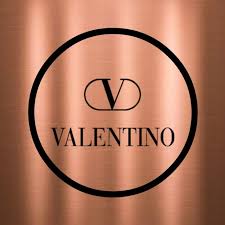
Valentino’s operating profit plunged 22% in 2024, falling to €246 million as global appetite for high-end goods cooled sharply. This represents one of the steepest annual declines in the label’s recent history, underscoring how even storied brands are vulnerable to sudden demand swings.
The profit contraction was magnified by significant one‑off costs tied to strategic investments, illustrating that short‑term gains from expansion can come at the expense of near‑term profitability. For Valentino, balancing growth initiatives with margin management has become an urgent priority.
Revenue Contraction Despite Regional Resilience
Group revenues dipped 2% at constant exchange rates to €1.31 billion, reflecting uneven performance across markets. While overall sales softened, the decline was less severe than the profit tumble, highlighting how revenue streams can mask deeper margin pressures.
Key markets such as Japan, the Middle East and the Americas delivered solid results, temporarily offsetting the drag from Asia. These pockets of strength demonstrate that geographic diversification remains critical for luxury players in times of patchy regional demand.
Valentino’s online channel grew 5% year‑on‑year, signaling that digital engagement can partially counterbalance flagging brick‑and‑mortar sales. This progress reflects a broader industry shift toward omnichannel models where e‑commerce plays an ever‑larger role in total revenue.
Executives see the digital uptick as foundational to future growth, investing further in personalized online experiences. A robust e‑commerce platform not only drives sales but also strengthens data‑driven customer insights for targeted marketing.
Retail Expansion Costs Weigh Heavily
One‑off expenditures related to the rollout of directly‑managed stores were a significant headwind. Valentino has prioritized control over retail operations, believing that directly‑operated boutiques better preserve brand image and customer experience.
However, the upfront capital outlay and restructuring costs can erode margins, especially during market slowdowns. Luxury groups must therefore time their retail investments carefully to avoid compounding revenue dips with hefty cost overruns.
The arrival of Alessandro Michele as Creative Director marked a major strategic pivot. Previously at Gucci, Michele brings a reputation for provocative design and storytelling, intended to invigorate Valentino’s heritage with fresh creative vision.
His first collections have already attracted critical praise, but the true test will be translating that artistic momentum into commercial success. Brand revitalization often hinges on aligning creative brilliance with customer desires.
Kering’s Stake Deepens Industry Consolidation
In 2023, Kering acquired a 30% stake in Valentino, with an option to fully acquire the company by 2028. This move underscores the M&A drive among luxury conglomerates seeking scale, portfolio synergy and cost efficiencies.
For Valentino, having Kering as a strategic partner could unlock access to broader resources—ranging from supply‑chain networks to shared digital platforms—accelerating its modernization agenda.
Demand in mainland China remained subdued, hurt by a prolonged real estate crisis and cautious consumer sentiment. High‑end spending in China has failed to rebound as quickly as in other regions following the pandemic.
This slowdown forces brands to seek growth elsewhere and underscores the risk of overreliance on a single market. Luxury houses are recalibrating strategies, from product launches to marketing, to better resonate with evolving Chinese consumer priorities.
Tariffs Add Further Strain
Lingering uncertainty over US‑China tariffs continues to cloud industry prospects. Tariff escalation under past administrations disrupted supply chains and injected volatility into global pricing strategies.
Luxury players face a labyrinth of import duties and regulatory shifts that can inflate costs and undermine consumer confidence. Stabilizing trade relations remains a key variable for any sustained recovery in high‑end retail.
While Asia outside Japan cooled notably, markets such as Japan, the Middle East and the Americas demonstrated resilience, each delivering mid‐single‑digit growth or better. These contrasting trends reflect local economic health and tourism flows.
Brands are increasingly reallocating marketing and inventory to stronger regions, using flexible supply chains to pivot quickly. This market agility is becoming a competitive advantage in a fragmented global landscape.
Luxury Peers Show Divergent Fortunes
Across the industry, LVMH’s fashion & leather division saw a 5% revenue drop in Q1 2025, while Hermès continued to post gains, spotlighting how brand positioning and price tiers drive resilience.
Ultra‑luxury labels with tight distribution and high barriers to entry have been more insulated from broader slowdowns, whereas accessible luxury brands face steeper headwinds from more price‑sensitive consumers.
Valentino’s beauty and fragrance line—which is licensed to L’Oréal—grew by over 50%, illustrating how non‑fashion categories can shore up overall profitability. These segments often have higher margins and consistent repeat purchase patterns.
Industry peers are similarly expanding into cosmetics, eyewear and watches, creating multi‑category ecosystems that can smooth out volatility in apparel sales. This diversification is increasingly viewed as indispensable.
Elevated inflation and stock market fluctuations have curbed discretionary spending, even among affluent consumers. In many markets, luxury purchases have become more deliberative, with shoppers delaying or foregoing non‑essential buys.
China’s property market woes and broader economic uncertainty further weigh on confidence. Without a visible “growth release valve,” brands must contend with a prolonged period of restrained luxury consumption.
Recovery may hinge on mending US‑China trade tensions, interest‑rate normalization and renewed consumer optimism. Any easing of tariffs and stabilization of global markets could jump‑start spending on aspirational goods. citeturn1search3
Brands that leverage data analytics, flexible sourcing and targeted marketing are best positioned to capture a rebound. For Valentino and its peers, agility and strategic foresight will determine who leads the next chapter in luxury’s evolution.
(Source:www.fashionunited.uk)
The profit contraction was magnified by significant one‑off costs tied to strategic investments, illustrating that short‑term gains from expansion can come at the expense of near‑term profitability. For Valentino, balancing growth initiatives with margin management has become an urgent priority.
Revenue Contraction Despite Regional Resilience
Group revenues dipped 2% at constant exchange rates to €1.31 billion, reflecting uneven performance across markets. While overall sales softened, the decline was less severe than the profit tumble, highlighting how revenue streams can mask deeper margin pressures.
Key markets such as Japan, the Middle East and the Americas delivered solid results, temporarily offsetting the drag from Asia. These pockets of strength demonstrate that geographic diversification remains critical for luxury players in times of patchy regional demand.
Valentino’s online channel grew 5% year‑on‑year, signaling that digital engagement can partially counterbalance flagging brick‑and‑mortar sales. This progress reflects a broader industry shift toward omnichannel models where e‑commerce plays an ever‑larger role in total revenue.
Executives see the digital uptick as foundational to future growth, investing further in personalized online experiences. A robust e‑commerce platform not only drives sales but also strengthens data‑driven customer insights for targeted marketing.
Retail Expansion Costs Weigh Heavily
One‑off expenditures related to the rollout of directly‑managed stores were a significant headwind. Valentino has prioritized control over retail operations, believing that directly‑operated boutiques better preserve brand image and customer experience.
However, the upfront capital outlay and restructuring costs can erode margins, especially during market slowdowns. Luxury groups must therefore time their retail investments carefully to avoid compounding revenue dips with hefty cost overruns.
The arrival of Alessandro Michele as Creative Director marked a major strategic pivot. Previously at Gucci, Michele brings a reputation for provocative design and storytelling, intended to invigorate Valentino’s heritage with fresh creative vision.
His first collections have already attracted critical praise, but the true test will be translating that artistic momentum into commercial success. Brand revitalization often hinges on aligning creative brilliance with customer desires.
Kering’s Stake Deepens Industry Consolidation
In 2023, Kering acquired a 30% stake in Valentino, with an option to fully acquire the company by 2028. This move underscores the M&A drive among luxury conglomerates seeking scale, portfolio synergy and cost efficiencies.
For Valentino, having Kering as a strategic partner could unlock access to broader resources—ranging from supply‑chain networks to shared digital platforms—accelerating its modernization agenda.
Demand in mainland China remained subdued, hurt by a prolonged real estate crisis and cautious consumer sentiment. High‑end spending in China has failed to rebound as quickly as in other regions following the pandemic.
This slowdown forces brands to seek growth elsewhere and underscores the risk of overreliance on a single market. Luxury houses are recalibrating strategies, from product launches to marketing, to better resonate with evolving Chinese consumer priorities.
Tariffs Add Further Strain
Lingering uncertainty over US‑China tariffs continues to cloud industry prospects. Tariff escalation under past administrations disrupted supply chains and injected volatility into global pricing strategies.
Luxury players face a labyrinth of import duties and regulatory shifts that can inflate costs and undermine consumer confidence. Stabilizing trade relations remains a key variable for any sustained recovery in high‑end retail.
While Asia outside Japan cooled notably, markets such as Japan, the Middle East and the Americas demonstrated resilience, each delivering mid‐single‑digit growth or better. These contrasting trends reflect local economic health and tourism flows.
Brands are increasingly reallocating marketing and inventory to stronger regions, using flexible supply chains to pivot quickly. This market agility is becoming a competitive advantage in a fragmented global landscape.
Luxury Peers Show Divergent Fortunes
Across the industry, LVMH’s fashion & leather division saw a 5% revenue drop in Q1 2025, while Hermès continued to post gains, spotlighting how brand positioning and price tiers drive resilience.
Ultra‑luxury labels with tight distribution and high barriers to entry have been more insulated from broader slowdowns, whereas accessible luxury brands face steeper headwinds from more price‑sensitive consumers.
Valentino’s beauty and fragrance line—which is licensed to L’Oréal—grew by over 50%, illustrating how non‑fashion categories can shore up overall profitability. These segments often have higher margins and consistent repeat purchase patterns.
Industry peers are similarly expanding into cosmetics, eyewear and watches, creating multi‑category ecosystems that can smooth out volatility in apparel sales. This diversification is increasingly viewed as indispensable.
Elevated inflation and stock market fluctuations have curbed discretionary spending, even among affluent consumers. In many markets, luxury purchases have become more deliberative, with shoppers delaying or foregoing non‑essential buys.
China’s property market woes and broader economic uncertainty further weigh on confidence. Without a visible “growth release valve,” brands must contend with a prolonged period of restrained luxury consumption.
Recovery may hinge on mending US‑China trade tensions, interest‑rate normalization and renewed consumer optimism. Any easing of tariffs and stabilization of global markets could jump‑start spending on aspirational goods. citeturn1search3
Brands that leverage data analytics, flexible sourcing and targeted marketing are best positioned to capture a rebound. For Valentino and its peers, agility and strategic foresight will determine who leads the next chapter in luxury’s evolution.
(Source:www.fashionunited.uk)














